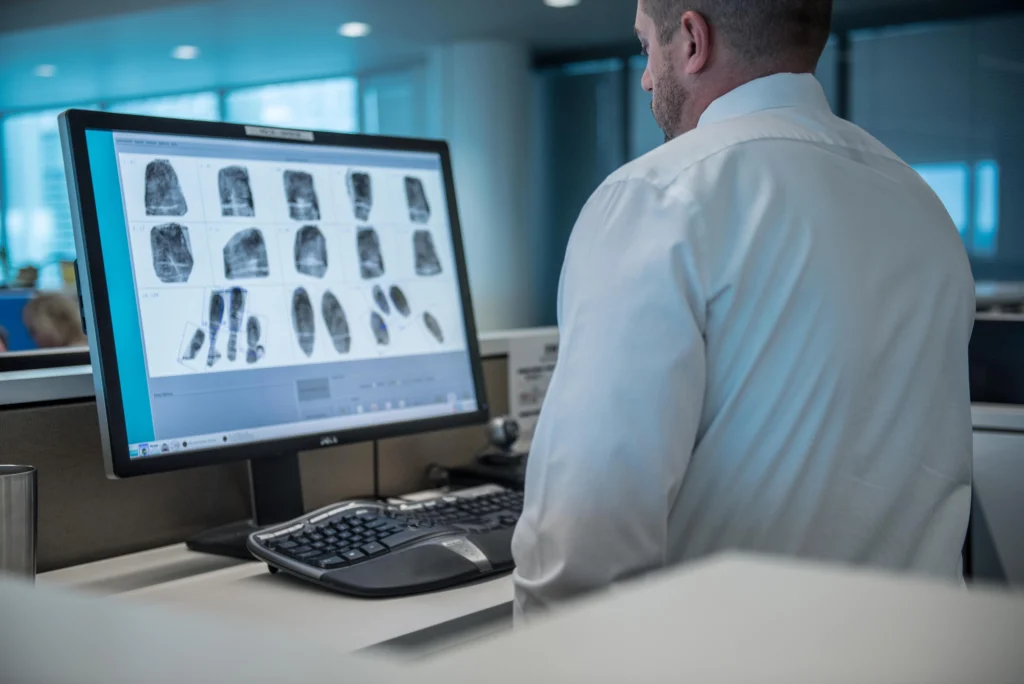Automation is largely responsible for modernity. Consider the assembly line, a means of automating construction. Even before computerized machinery took over from workers on the factory floor, the process of designing construction to maximize efficiency ended up exponentially increasing production capabilities.
A criminal justice agency may not be able to put mechanized robots on a conveyor belt handling court documents, but with computerized data, there are things you can do to optimize operations through automation that are more effective than you may have realized, especially considering how IoT changes the equation.
The Internet of Things makes it so you can extend the computer network of your criminal justice agency to all devices employees, clients, and certain approved affiliates interact with. Accordingly, even in court, new information can be immediately sent to or from attorneys fighting a case (in full agreement with associated law, of course).
Following we’ll briefly explore a few tips you may want to consider as regards criminal justice agency automation. Take these guidelines as suggestions. Differing criminal justice agencies have their own methods of operation. Here, though, are some solid tactics to help you streamline operational data, its management, and its overall implementation.
1. Develop a Process Involving Case Management

Every new case needs to be plugged into a sort of digital “conveyor belt”, if you will, which cycles that data through the right areas of your business. There are certain things that, at the base level, every case will require as regards documentation. Identify those things and establish an order of operations.
Get the balance right, and you’ll not only expedite the onboarding process for new cases, you’ll make it possible for your legal staff to do more at once. Instead of having to chase down certain information, what they need comes across their desk in the proper time, and they can address it based on priority and convenience over addressing things based on capability.
2. Explore What Alternatives Have Worked For Similar Agencies

In order to develop a process that works, and represents your specific niche in the criminal justice industry, you want to look at what other similar businesses have done. Whether you’re managing criminal justice cases on behalf of the government or citizens, there are other offices doing what you’ve done.
They’ve struggled with technology, optimization, and streamlining functionality as a whole. Accordingly, you can save a lot of trouble just by appropriating relevant tactics from their offices to your premises.
3. Find a Better Way of Organizing Data

It doesn’t matter if the legal case is big or small, it’s going to generate lots of information. The larger the case, the more data there will be. Accordingly, you need a way of consolidating and organizing that data. For that, programs like NICE can be an instrumental solution in data organization and management. Specifically, this program deals with digitized evidence.
That’s considerable because, in modernity, quite a bit of evidence isn’t just stored digitally, it is only digital. A great way to see that is just browsing through the recent case between Johnny Depp and Amber Heard. A big percentage of presented evidence was audio recordings, video recordings, and images that were all digital.
At one point, Amber Heard even leaned on technology to avoid a more clear answer when under interrogation from Depp’s attorneys. She refused to respond definitively unless she could see the “metadata”. So you need a way to organize not just data, but collateral data associated with technologically-derived evidence, such as metadata.
When data is properly consolidated, directly and indirectly, you have greater potential to apply varying automated solutions. Information can be interpreted by a computer more effectively, and you can make onboarding new evidence and related information much more streamlined. Solutions like NICE are key in automation.
4. Keep Data on New Processes for Continuous Improvement

As you adopt new ways of managing your criminal justice agency in an automated way, two things will happen immediately. One, things will work better than expected. Two, unexpected errors will crop up endlessly.
Just think about buying a new computer. It’s faster, it’s sleeker, it’s more convenient and reliable, and when something goes wrong, you’re clueless about what to do. Well, with new automated data processes, you’ll see certain operational knots come undone, allowing everyone on your staff to breathe a sigh of relief.
But then some funky issue will develop nobody knows how to deal with. What you want to do is, beyond process automation, similarly automate data collection concerning operational functionality specifically.
Managed Services Providers (MSPs) can be instrumental in helping you put together data collection processes that are themselves automated, and help you manage the change in the operational organization.
5. Design Automated Processes to be Flexible
Obviously, your criminal justice agency functioned before there were digital automation options. Accordingly, it’s in your best interest to assure any new means of end-to-end management you adopt don’t interfere with previous levels of productivity. Your automated solution should make things easier and more optimal, not introduce unwanted static.
Start off with one “area” of your agency at a time, and as you upgrade things, be flexible. You’ve got to be prepared to upgrade again as technological capability reaches the next iteration. You’ve also got to be prepared to put out small “fires”, and revert to other means of the organization should something go wrong.
Automation Saves Time and Preserves Resources

Flexibility in automated processes protects overall fluidity of business. Keeping data on new means of managing your criminal justice agency helps you know what’s working, what isn’t, and things you need to be aware of. Organizing data prior automation will help you more efficiently initiate automated processes.
In order to narrow down the sort of solutions you onboard for automation, look at what other similar agencies in the criminal justice sphere have done. Finally, in light of all this new procedural info, you want to develop a specific process for onboarding and managing cases.
This five-fold approach to criminal justice agency automation should help you be more efficient as an office, allowing you to do more with less, and function much more capably. Lastly, you’ll be better prepared to upgrade into further tech innovations if you’re already somewhat automated; and you definitely will need to do that at some point.














